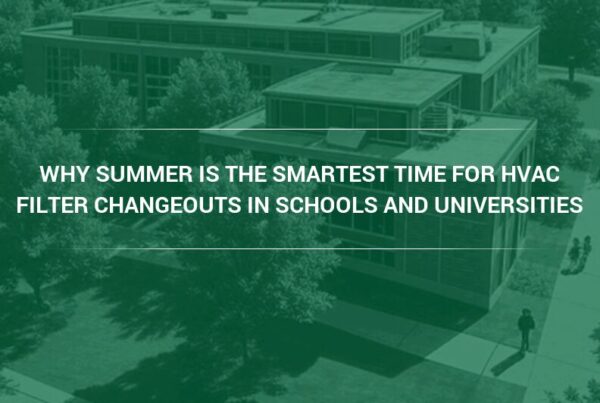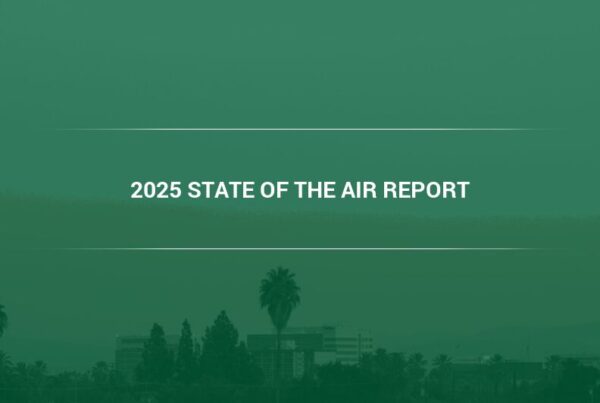It is important to become familiar with all the terms that people use to discuss air pollution. If you are not familiar with all the air pollution terms you should know, it will be difficult to learn a lot about the more complex topics regarding air pollution. You have to know the basics about air pollution before you can start learning about advanced concepts.
Air Pollution Terms You Should Know Regarding Outdoor Air Pollutants
“Much of the conversation revolving around air pollution involves outdoor air pollution,” says stated Camfil’s Charlie Seyffer, Manager of Marketing & Technical Materials and 37-year ASHRAE member and active committee participant. “The air pollution terms you should know regarding outdoor air pollutants largely cover the various types of outdoor air pollutants and systems of measurement. The most common are pollutants are what the Environmental Protection Agency (EPA) has termed ‘Criteria Air Pollutants’.” (1)
Anthropogenic Emissions: Anthropogenic means human created, so this term refers to emissions that come from man-made sources and human activity, as opposed to air pollutants which come from natural sources.
Criteria Air Pollutants: The Clean Air Act of 1970 defined six different air pollutants as “criteria air pollutants”, or the pollutants which do the most damage to human health and are the most ubiquitous. These pollutants include lead, carbon monoxide, ozone, sulfur dioxide, nitrogen oxide, and particulate matter.
Mobile Sources: Mobiles sources are sources of emissions that move, such as trucks, buses, cars, planes, and trains.
NOx: Nitrogen oxides come from the combustion of fossil fuels, and they can interact with volatile organic compounds in the air to create ground-level ozone.
Ozone: Ozone is beneficial in the upper atmosphere, as it protects the Earth from harmful radiation from the sun. At ground level ozone is a pollutant, and it can harm people’s lungs. It is a major part of smog, and it contributes to the greenhouse effect.
Particulate Matter: Particulate matter refers to tiny liquid and solid particles in the air. The particles are so small they can enter a person’s lungs and bloodstream causing damage to their health. Particulate matter is divided into three categories. PM10 refers to particulates less than 10 microns in size (smaller than the width of a human hair), PM2.5 refers to matter smaller than 2.5 microns in size and PM1 refers to particulate matter smaller than 1 micron in size.
Point Sources: Point sources are stationary sources of pollution that release massive amounts of air pollution. Point sources have specific locations, like smokestacks from industrial plants, and they release emissions in quantities that go above the specified threshold for emissions.
Smog: Smog is made out of a combination of different pollutants, such as particulate matter and nitrogen oxides, though it is mainly ground-level ozone.
VOCs: Volatile Organic Compounds are dangerous vapors like industrial chemicals, and they can react with other chemicals in the atmosphere to produce harmful byproducts like ground-level ozone.
Air Pollution Terms You Should Know Concerning Air Pollution Control
“There are a variety of different control methods, regulations, and systems of measurement created to control air pollution,” says Seyffer. “The air pollution terms you should know concerning air pollution control provide a common language to discuss standards and emission control strategies. Emission control strategies typically focus on reducing emissions through regulation, such as the Clean Air Act and through pursuing the use of alternative fuel vehicles.” (2)
Air Quality Index (AQI): The Air Quality Index is a system created by the Environmental Protection Agency to provide a coherent way of advising the public on the state of air pollution levels. It is color-coded and runs from healthy to hazardous air, and with each level, the dangers posed by air pollution grows greater.
Alternative Fuel: Alternative fuels are fuels that can replace traditional fossil fuels, which are large sources of pollution. Alternative fuels include things like compressed natural gas, electricity, and ethanol.
Control Techniques, Measures, Strategies: Control strategies refer to larger plans that integrate many methods of pollution control, while techniques and methods refer to smaller scale single actions that can be taken to reduce air pollution.
CAA: The Clean Air Act was passed in 1970 to improve the overall ambient air quality. Revisions to the act were made in 1990, and most discussions of the CAA reference the amended Clean Air Act of 1990.
EI: An Emissions Inventory is a thorough and detailed account of all the sources of pollution in a given area, as well as all of their recorded emissions.
HOV: High Occupancy Vehicle lanes are lanes on highways designated for use by vehicles with two or more people. They encourage carpooling and mass transit thus reducing the number of pollutants introduced by automobiles.
I/M Program: Inspection and Maintenance programs are created to determine the number of emissions a vehicle is emitting, as well as to ensure that the emission control systems in the vehicle are functioning correctly.
NAAQS: The National Ambient Air Quality Standards are limits set on levels of ambient air pollution, based upon the EPA’s knowledge of the environmental and health impacts that result from the various air pollutants.
Remote Sensing: Remote sensing is a method of identifying which vehicles pollute the most. It uses a device that tracks emissions from tailpipes with sophisticated sensors.
Air Pollution Terms You Should Know Relating to HVAC Systems
“Heating, ventilation and air conditioning (HVAC) systems exist to regulate, heat, cool, ventilate with fresh or filtered air and provide good indoor air quality,” says Seyffer.
“The air pollution terms you should know relating to HVAC systems cover their operation, installation, and management. HVAC systems should contain air filters to reduce the level of harmful pollutants found indoors or introduced through ventilation air from outdoors.” (3)
Air Filtration System: An air filtration system is a device designed to remove harmful particle and air pollutants from the air in a building.
Capacity: Capacity means the producing capability or the air output of heating and cooling units.
Compressor: A compressor is the essential component of a heat pump or air conditioning unit. In air conditioners, it is what pumps the refrigerant that cools the air, and it has to maintain adequate pressure at all times so that the refrigerant can move into the air in sufficient amounts
Ductwork: Ductwork refers to the conduits that allow air to flow through a building and they are usually made out of metal.
HEPA Filter: HEPA filters are High-Efficiency Particulate Air filters, which are capable of removing sub-micron particles from the air. HEPA filters can remove around 99.9% of all unwanted particles from the air in a building.
Indoor/Outdoor System: Refers to systems that consist of components both inside and outside of a building.
Understanding the critical air pollution terms you should know is vital for your health, and it impacts your understanding of warnings about air pollution.
Now that you are familiar with the basic air pollution terms you should know, Camfil, a leader in HEPA air filters can provide you with more in-depth information on air pollution. Contact Camfil now for information on how to best protect yourself from air pollutants and to purchase air filters for your HVAC system.
SOURCES



